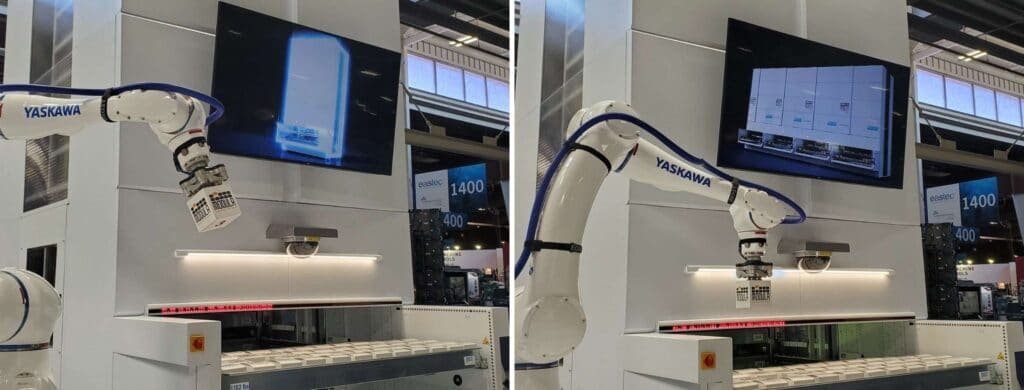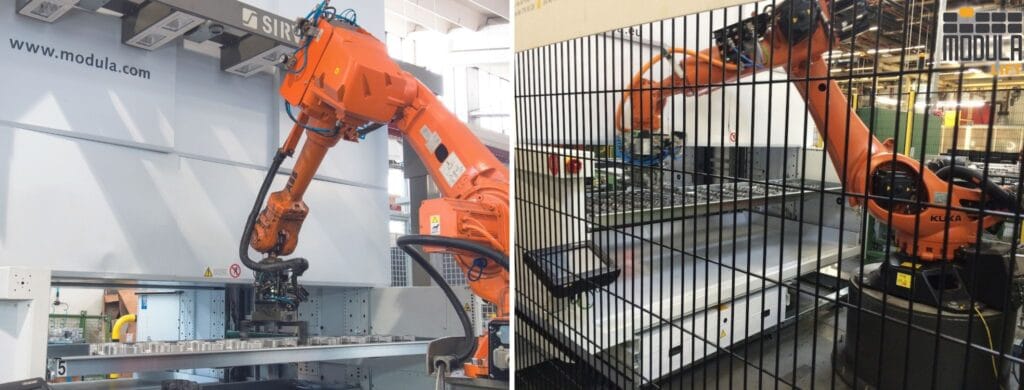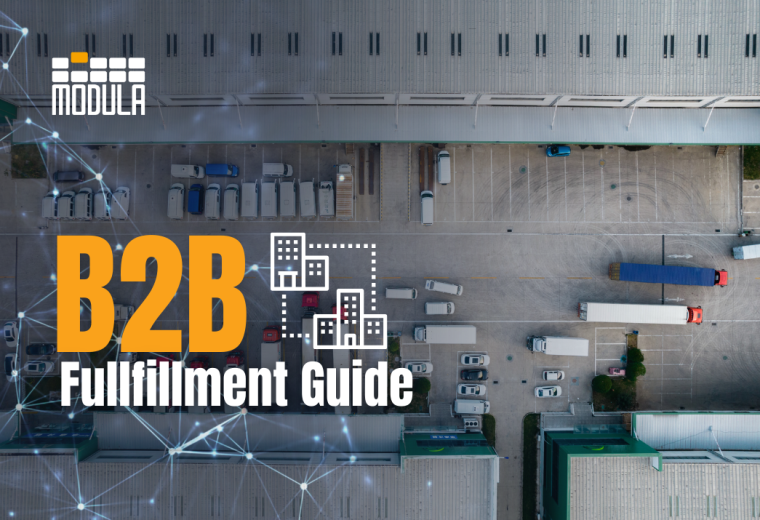The Answer to Your Labor Force Issues May Be a Fully Automated Warehouse
Combining a Modula VLM with a robot, your warehouse can run at top speed around the clock and offer an easy solution to the labor force issues
Warehouse managers and others who need to keep materials moving rapidly face a huge problem stemming from the pandemic: An increasing demand for productivity and a decreasing supply of labor. This has been particularly exacerbated in e-commerce applications as online sales necessitate intensive operational improvements even while workers are disinclined to return to their positions for a variety of reasons.
At Modula, we have championed automated storage and retrieval systems to not only increase productivity and picking accuracy but also to enhance worker safety and job satisfaction. What do you do, though, when your labor supply still lags behind your requirements?
You might turn to a worker who doesn’t get sick, shows up on time, never needs a break, and is happy to work around the clock: a robot.
To explore the possibilities, Modula has teamed up with a robot manufacturer, Yaskawa, and a robot integrator, KC Robotics. A demonstration of a Modula vertical lift module interacting with a Yaskawa robot was featured at the EASTEC exposition in West Springfield, MA, Oct. 19-21.
To learn more about how these advanced technologies can join forces in service of materials management, we sat down with Dean Elkins, Segment Leader – Material Handling at Yaskawa; Jerry Schrott, Applications Engineer and Project Manager at KC Robotics; David Lind, Business Development Director for Modula; and Rick Havener, Director of Sales for Modula.
In a wide-ranging discussion, we looked at the larger market forces at play and the methodology for using a robot and automated storage and retrieval systems to do what traditionally would have required people scurrying around between shelves to execute.

Why integrated automated solutions are playing a larger operational role across industries
Robots are not new to American manufacturing. Automotive facilities have employed them for years on assembly lines and to handle thermal processes such as spot welding. But last year for the first time, non-automotive applications outpaced automotive consumption of robots, Elkins said. That’s been driven primarily by two factors.
First, the labor shortage is acute and unlikely to improve anytime soon, Havener said, necessitating higher pay to attract workers. “The cost of labor is going to continue to escalate at an astronomical pace,” he said. “Just look at how McDonald’s is paying signing bonuses.” On the other hand, robots are becoming more affordable, Elkins said, because now it’s possible to buy an off-the-shelf vision system for a robot rather than developing it on your own. Economies of scale are lowering the price as well. Schrott adds that companies are realizing the robots they’ve bought can be repurposed readily enough for another project if one runs its course or if a robot’s duties are split between different operations: “The programming for the end-user has gotten to the point that it’s a lot easier to jump in and modify the program, even if you don’t have robotic experience.”
While robots have been relatively limited in addressing labor issues until recently, automated storage and retrieval systems have been adopted by a wide range of industrial sectors to boost efficiency and productivity. The idea of bringing the part to the picker rather than vice versa has resulted in dramatic throughput gains. Adding in robots can in many scenarios boost efficiencies even further.
How robots and automated storage and retrieval systems can generate endless productivity
Automated storage systems such as Modula’s vertical lift modules greatly enhance productivity by saving operators hours retrieving items from traditional shelving. In certain setups, a robot can help alleviate the labor shortage issue by performing tasks normally requiring human intervention, such as removing items from a VLM tray and placing them on a conveyor belt for further processing.
In the demonstration project at EASTEC, a Yaskawa robotic arm was used to pick objects from a tray. A special gripper, using vacuum suction technology, held the item as it was placed in a different location. This demonstration had a “human-machine interface” – an HMI – with which a guest activated the arm to retrieve a gift box and turn it over to get a number. From there, the guest went to a Modula VLM controlled by its regular touchscreen, tapped in the number, and got the gift.
KC Robotics handled the software programming to coordinate the devices, which connect to Modula’s standard warehouse management system (WMS) application.
Generating a quick return on the investment with a fully automated warehouse
Modula VLMs produce an ROI in 6 to 12 months on average, due to the increased productivity and accuracy they facilitate, as well as dramatic space savings. Similar ROIs can be expected on robots, Elkins said.
It’s not surprising why, when you think about it. Robots can perform their jobs around the clock, every day of the week, without requiring overtime, breaks, or vacations. VLMs greatly reduce the demands placed on a workforce by creating a safer environment that is less physically demanding. Robots – in certain applications – can further extend the benefits of automation by taking over repetitive and mundane tasks. And items that would be far too heavy for a human to handle can be picked up and moved by a robot without a sweat: Yaskawa’s arms can hoist 1985 pounds (900 kg) and move it without so much as a grunt.
As David Lind of Modula put it “Space is at a premium today and companies are looking for ways to maximize the revenue of their warehousing assets. Quite simply, they need to get more from less. That’s why they turn to Modula to consolidate their inventory in a smaller footprint with vertical lift modules. Then they can have a robot facilitate the loading and unloading of that VLM when the manpower is missing.”

All the experts agreed that there is a wide range of industries and applications where VLMs and robotics can work well together. For example, e-commerce has grown exponentially since the outbreak of Covid-19. The VLM-robot combination can allow a clothing or footwear manufacturer to quickly fulfill orders of a wide range of SKUs all from one location, even without a human workforce to step in. Pharmaceutical operations can avoid the risks sometimes posed by giving employees access to controlled substances by assigning the handling tasks to robots. Similarly, high-value items such as Rolex watches might be better processed with robots rather than risk theft from operators who can easily pocket them rather than put them in their proper shipping package. The list of viable applications keeps growing as organizations realize the significant advantages of such fully automated approaches.
For more information about how Modula can help your operations, complete our contact form.
For more information about Yaskawa, visit https://www.motoman.com/en-us
For more information about KC Robotics, visit kcrobotics.com





